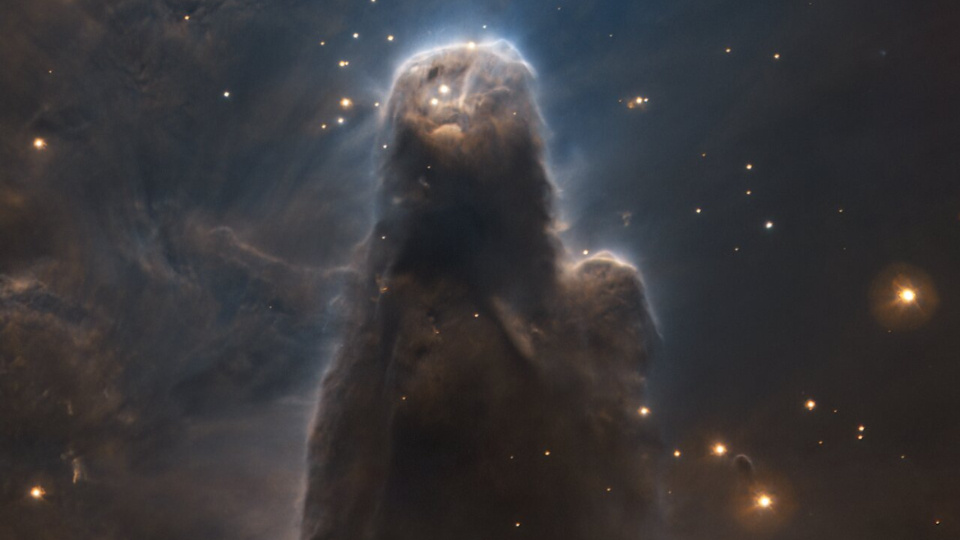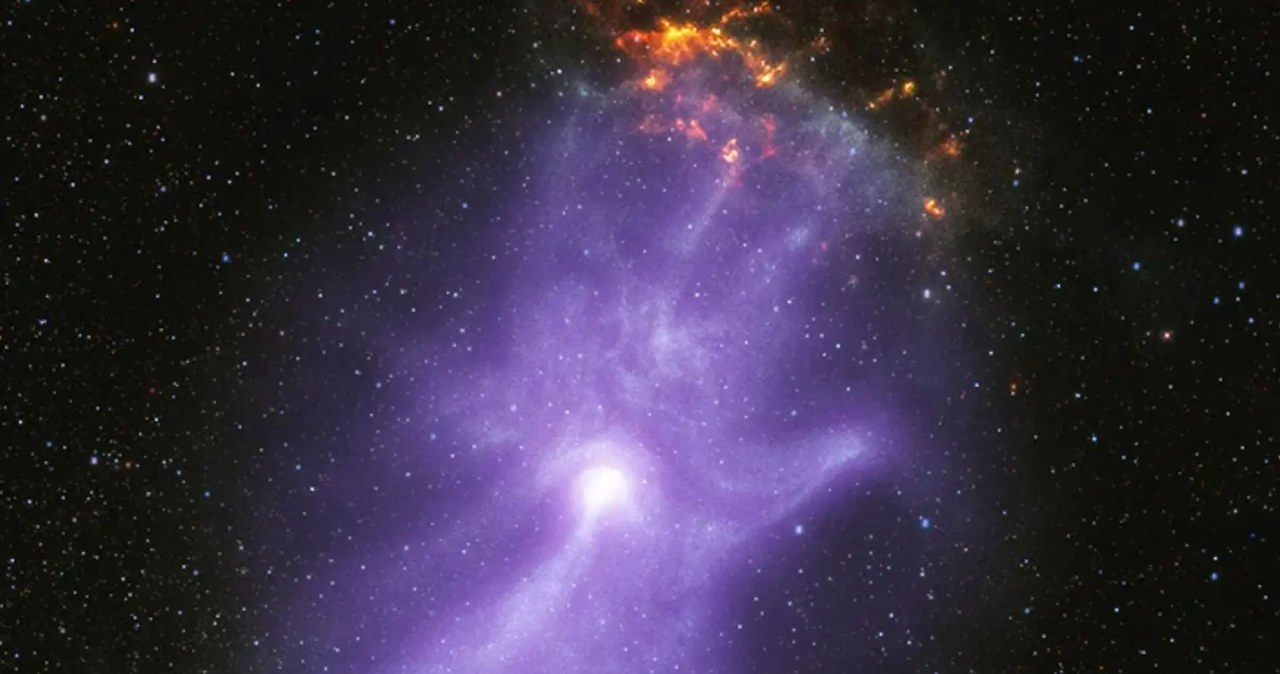In 2022, several space photos taken by the Webb telescope were published, which were breathtaking. However, a photo released by the European Southern Observatory puts them in real competition.
This unusual object is very far from Earth. More than 2.5 thousand light years from Solar System A tall black figure guards the sky. Wide at the base, becoming narrower as it rises. It seems to be made of dense material, which in several places forms folds resembling a flowing robe.
The head of the figure, which is on a black neck, is relatively small. In its center, a large eye shone brightly, under it another. On the right, a subtle glow etches a thick arm- or wing-like figure from the background. Indeed, this is what an illustration of the eternal guardian of the universe or the angel of darkness could look like.
The European Southern Observatory (ESO) released the stunning image to mark the organisation’s 60th anniversary.
The above description is an example of what we can see in the pictures when we succumb to the phenomenon of pareidolia. This happens when we look for familiar objects or characters in random shapes. We are exceptionally good at recognizing faces, which we often see in inanimate objects or in natural terrain formations.
There are many examples of pareidolia. One of the most famous is the image known as The Face of Mars. The distinctive geological formation on Mars was first imaged by the Viking 1 probe. Although it is known to be just a rock, it deceptively resembles a human face.
It’s the same with the image released by ESO. The Dark Guardian or Great Cosmic Beacon is actually a nebula in the constellation of the Unicorn. It is called the Cone Nebula and is 7 light years across.
This feature is different from other nebulaethat we know from pictures taken by different types of telescopes. Nebulae can reflect light from nearby stars or emit their own light. The latter include, for example, the Eagle Nebula, known for its distinctive Creation Corners.
But there are also nebulae such as the Cone Nebula: huge clouds of supercooled gas and dust. In these regions of space, young stars slowly begin to form. This type of nebula – dark nebulae – absorb visible light. This makes them appear dense, and sometimes completely black to the human eye.
This is how it appears in images taken by optical telescopes. Like the one just released by the European Southern Observatory.
ESO brings together sixteen European countries (including Poland) that together conduct astronomical research in the Southern Hemisphere. One of ESO’s observatories is the Paranal Observatory. inside Chilein the Andes, at an altitude of 2635 m.
This is where the image of the Cone Nebula was taken. Created by A very large telescope (Very Large Telescope, VLT), one of the most advanced optical telescopes in the world. It consists of eight telescopes: four auxiliary and four main with mirrors with a diameter of 8.2 m.
The latter can work together or separately. In the latter case, they can image objects of magnitude 30. This is four billion times smaller than what we see with the naked eye.
Both telescopes are big in their name. They are Antu, Kueyen, Melipal, and Yepun. Mounted on Antu is FORS2, a FOcal Reducer and Spectrograph 2. This is a very sensitive spectrograph that was used to capture the image of the conical nebula. They can be downloaded for free from the ESO website.
Resources: ESOAnd the Science alert

Echo Richards embodies a personality that is a delightful contradiction: a humble musicaholic who never brags about her expansive knowledge of both classic and contemporary tunes. Infuriatingly modest, one would never know from a mere conversation how deeply entrenched she is in the world of music. This passion seamlessly translates into her problem-solving skills, with Echo often drawing inspiration from melodies and rhythms. A voracious reader, she dives deep into literature, using stories to influence her own hardcore writing. Her spirited advocacy for alcohol isn’t about mere indulgence, but about celebrating life’s poignant moments.







